-
1 of 253523 objects
Eikon Basilike: the portraicture of His Sacred Majestie in his solitudes and sufferings 1649
20.3 x 12.9 x 3.2 (book measurement (conservation)) | RCIN 1080417
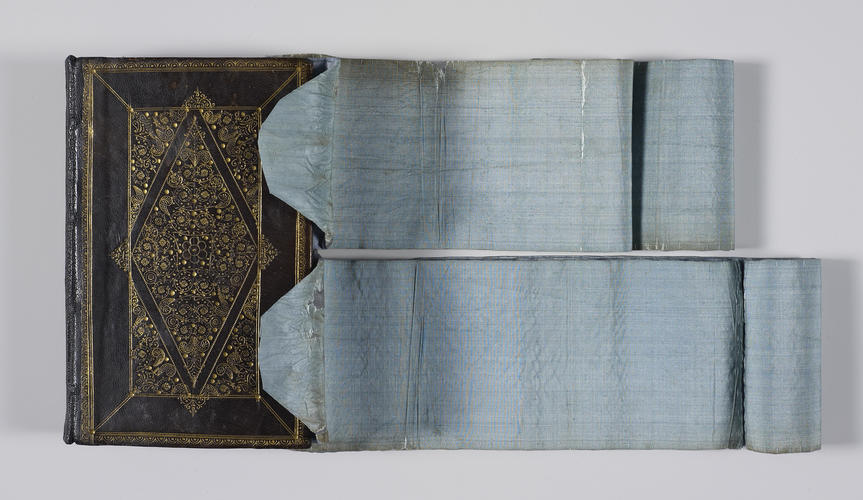
Attributed to Charles I, King of Great Britain (1600-49)
Eikon Basilike : the portraicture of His Sacred Majestie in his solitudes and sufferings : together with his private prayers used . . . and delivered to Dr Juxon . . 1649
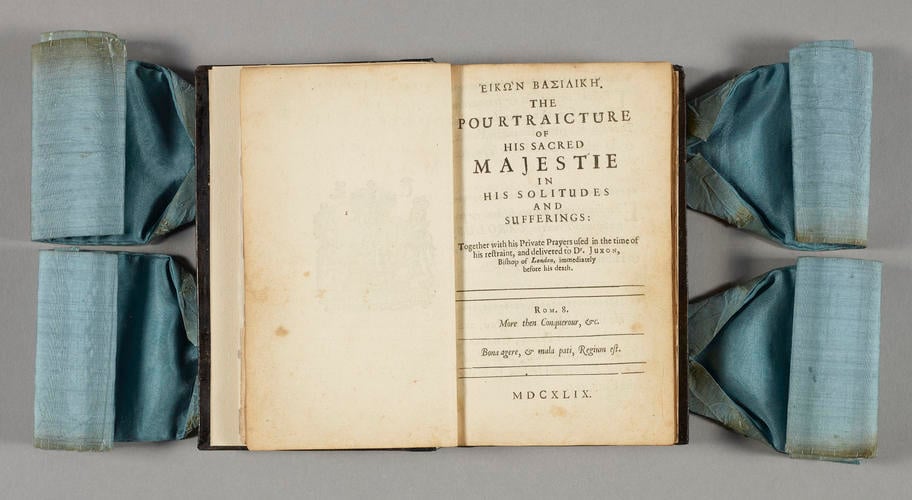
Attributed to Charles I, King of Great Britain (1600-49)
Eikon Basilike : the portraicture of His Sacred Majestie in his solitudes and sufferings : together with his private prayers used . . . and delivered to Dr Juxon . . 1649
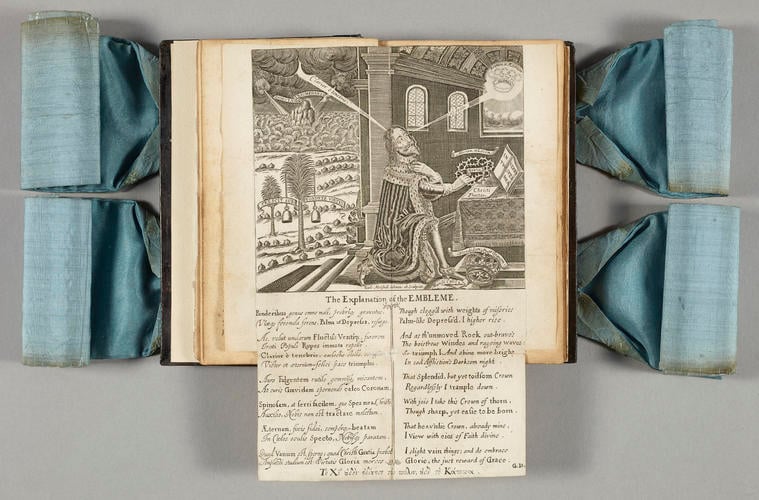
Attributed to Charles I, King of Great Britain (1600-49)
Eikon Basilike : the portraicture of His Sacred Majestie in his solitudes and sufferings : together with his private prayers used . . . and delivered to Dr Juxon . . 1649
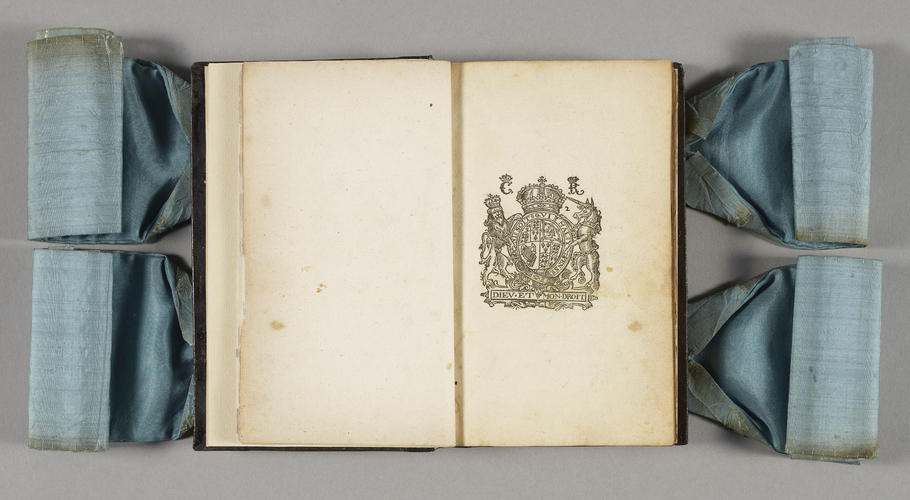
Attributed to Charles I, King of Great Britain (1600-49)
Eikon Basilike : the portraicture of His Sacred Majestie in his solitudes and sufferings : together with his private prayers used . . . and delivered to Dr Juxon . . 1649
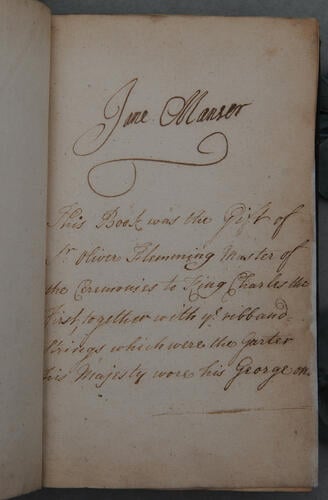
Attributed to Charles I, King of Great Britain (1600-49)
Eikon Basilike : the portraicture of His Sacred Majestie in his solitudes and sufferings : together with his private prayers used . . . and delivered to Dr Juxon . . 1649
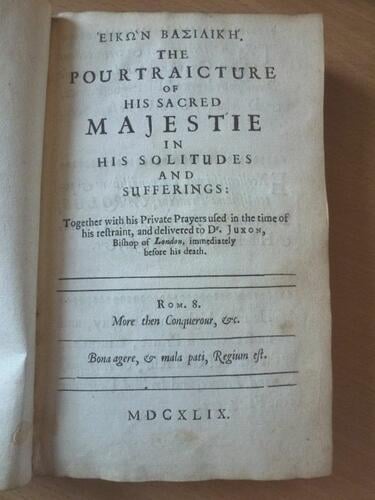
Attributed to Charles I, King of Great Britain (1600-49)
Eikon Basilike : the portraicture of His Sacred Majestie in his solitudes and sufferings : together with his private prayers used . . . and delivered to Dr Juxon . . 1649

Attributed to Charles I, King of Great Britain (1600-49)
Eikon Basilike : the portraicture of His Sacred Majestie in his solitudes and sufferings : together with his private prayers used . . . and delivered to Dr Juxon . . 1649







-
A copy of Eikon Basilike, a book thought to have been written by Charles I, with four wide, blue ribbon ties attached to the binding. The ties are thought to be the Charles I's blue ribbon of the Order of the Garter.
The first edition of Eikon Basilike was in print immediately after Charles I's execution on 30 January 1648/9. 'Eikon Basilike', a transliteration from the Greek, means 'portrait of the king'. Traditionally Charles I has been identified as the author, but there has been some controversy over this since John Gauden, Bishop of Worcester, emerged as a probable ghostwriter in the 1690s. It is now thought to have been a collaboration between Gauden and the king. Part political memoir, part spiritual autobiography, the book reviews the course of the civil wars from the calling of the Long Parliament in 1640 to Charles's imprisonment at Carisbrooke Castle in 1647. It defends the king's policies, and presents Charles as the defender of both Church and State. The book's portrayal of Charles as a moderate, peace-loving ruler transformed opinion of his execution so that it came to be viewed by many as an act of martyrdom.
Despite the government’s attempts to suppress the words of the king they had just executed, Eikon Basilike became a best-seller. In its first year, thirty-five editions were published in England, with a further twenty-five issued elsewhere in Europe. It became one of the most influential books of the seventeenth century.
This particular copy of the Eikon Basilike is notable for the four lengths of wide, blue, silk ribbon attached to its binding, which have been thought to have been cut from the sash worn by Charles I to indicate his membership of the Order of the Garter, an order of chivalry dating back to 1348. Inside the book, an inscription reads: "This Book was the Gift of Sr Oliver Flemming Master of the Ceremonies to King Charles the First, together with ye ribband strings which were the Garter his Majesty wore his George on". The Order of the Garter is the highest order of chivalry in England, and the blue Garter ribbon is part of the insignia worn by members of the Order.
The act of adding Garter ribbons, which were thought to be a relic of the king, to a copy of his text – perceived by some as akin to Scripture – epitomises the intention Charles I and his supporters had when putting forward the idea of the king as a martyr and saint.
The book came into the Royal Collection in 1949 when Bernard C. Reade presented it to Queen Mary, widow of King George V and mother of King George VI. Queen Mary was known to collect objects related to the Stuart Royal Family, and Mr Reade wrote that he would be honoured if she would accept his book for her collection. Mr Reade knew that the book had belonged to his grandmother, Christian Williams, née Gill, but the provenance cannot be traced back any further.
The book and ribbons were recently conserved. For further information and a discussion of whether or not the ribbons might be Charles I's Garter ribbon, see our conservation case study here.
Binding Information
Black goatskin binding with extensive gold-tooling.
Left and right boards contain a panel design, formed of an outer roll-tooled border of semi-circles and double fillet lines and an inner border of double fillet lines; central inner panel contains an additional diamond-shaped dotted roll border, with large floral stamps on each of the points. Inner panel profusely decorated with floral, feather and swirling stamps.
Spine re-backed but contemporary with the right and left boards. Flat with no raised bands; outer roll-tooled border of semi-circles and double fillet lines identical to left and right boards. Diamond-shaped floral stamps at the head and tail and centre of spine, and six horizontal stamps as if to give the impression of bands.
Silk ties fixed to the boards through pairs of holes on either side, with the endpapers glued over.Provenance
Sir Oliver Fleming (d. 1661); Jane Manser (active c. 18th century); Christian Williams (active late 19th century); Bernard C. Reade (active 1949); presented to Queen Mary by Bernard C. Reade, 1949
-
Creator(s)
Attributed to (author)(printer)Acquirer(s)
-
Measurements
20.3 x 12.9 x 3.2 (book measurement (conservation))
10.2 cm (Width); 34.0 cm (Length) (fabric ribbon)
10.2 cm (Width); 35.0 cm (Length) (fabric ribbon)
10.2 cm (Width); 37.0 cm (Length) (fabric ribbon)
10.2 cm (Width); 30.0 cm (Length) (fabric ribbon)
Category
Other number(s)
ESTC : English Short Title Catalogue Citation Number – ESTC R34429Alternative title(s)
Eikon Basilike : the portraicture of His Sacred Majestie in his solitudes and sufferings : together with his private prayers used ... and delivered to Dr Juxon ...